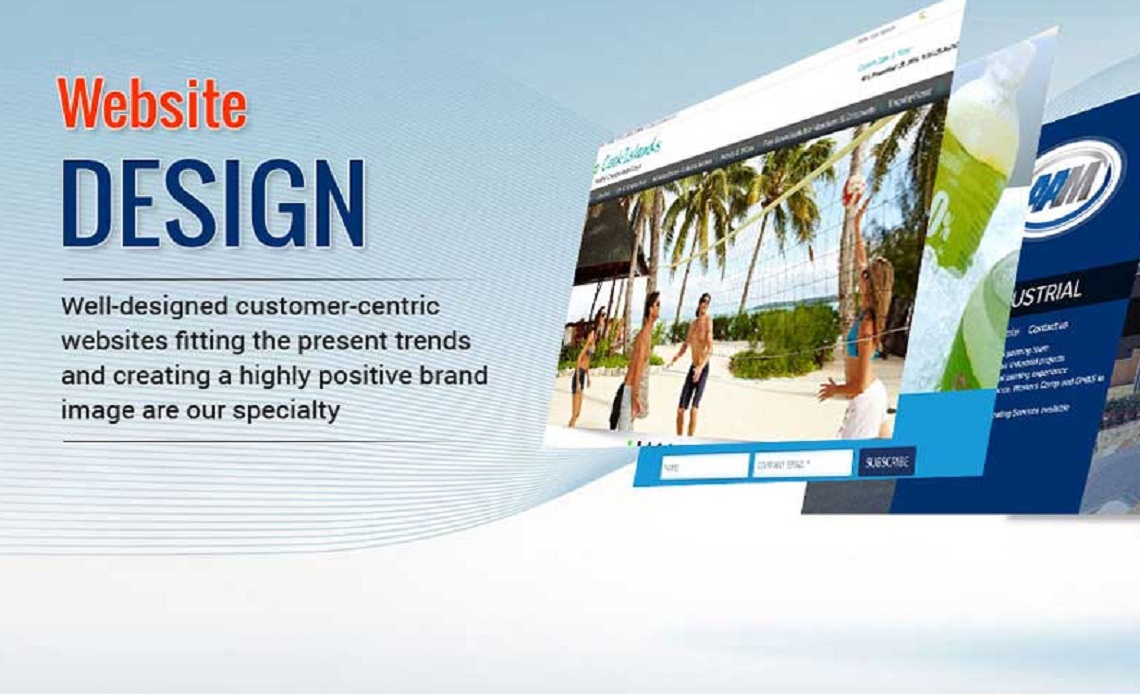The Essentials of Effective Web Style for Newbies
Reliable website design is a multifaceted discipline that dramatically impacts individual engagement and fulfillment. For novices, realizing the fundamentals-- such as recognizing individual experience, picking a proper color scheme, and guaranteeing responsive layout-- can be discouraging yet fulfilling. Each selection, from typography to aesthetic power structure, plays a critical role in developing a cohesive and practical site. The nuances of these elements often reveal much deeper understandings that can transform a basic web site right into a compelling digital visibility. What foundational principles should newbies focus on to attain this purpose?
Comprehending User Experience

Secret elements of UX include customer study, which helps recognize the demands and preferences of the target audience, and functionality screening, which analyzes exactly how genuine individuals connect with the website. Intuitive navigating, responsive style, and clear, engaging content are essential components that add to a favorable customer experience.
In addition, the emotional action generated from individuals throughout their communications can significantly impact their perception of the brand - Web Design Pretoria. A website that focuses on UX promotes trust and encourages repeat visits, inevitably driving conversions and client loyalty. Comprehending user experience is not simply an alternative for striving internet designers; it is an essential principle that underpins successful digital interactions and affects the overall performance of internet design.
Picking the Right Shade Scheme
Selecting the ideal shade scheme is frequently a crucial consider website design that can greatly influence customer understanding and engagement. A well-thought-out color pattern not only improves the aesthetic appeal of a site but also plays a crucial function in branding and communicating the designated message.
When selecting shades, take into consideration the psychological results they carry users. Blue commonly stimulates sensations of trust fund and integrity, while red can promote exhilaration or necessity. Use shade theory concepts, such as corresponding and similar color design, to produce visual harmony.
Additionally, make sure that your color options align with your target market and market standards. Performing individual research study can offer beneficial insights right into recommended color design that reverberate with your demographic. In addition, maintaining enough comparison between text and history shades is important for readability and availability, ensuring that all customers can navigate your website easily.
Last but not least, consistency is crucial; use your color palette consistently throughout all pages to reinforce your brand name identification. By thoughtfully selecting your color scheme, you can create an engaging individual experience that astounds site visitors and urges them to engage with your web content.
Significance of Responsive Design
A properly designed site not just mesmerizes with its color scheme yet also adjusts flawlessly to numerous tools and screen sizes. Responsive style is essential in today's electronic landscape, where users access the web site through a myriad of gadgets, consisting of tablets, mobile phones, and desktops. Web Design Pretoria. An internet site that fails to change to different display sizes threats pushing away a significant section of its target market, eventually causing higher bounce rates and lessened individual interaction
Furthermore, online search engine like Google focus on mobile-friendly internet sites in their ranking algorithms, indicating that responsive style is not simply a user experience improvement yet also a crucial part of reliable search engine optimization (SEARCH ENGINE OPTIMIZATION) By making certain that your website is receptive, you enhance functionality, making helpful site it much easier for visitors to navigate and interact with your material, regardless of the gadget they are using.
Incorporating responsive layout techniques, such as liquid grids, versatile images, and media inquiries, enables an internet site to maintain a appealing and regular visual across different platforms. This flexibility not only improves customer fulfillment however likewise promotes brand integrity and depend on, as users are more probable to involve with a site that supplies a smooth experience.
Browsing Typography Fundamentals
Typography plays a critical duty in website design, working as the visual voice of an internet site's web content. It incorporates the fonts, dimensions, spacing, and general discussion of text, which considerably influences readability and individual experience. To begin browsing typography essentials, it's necessary to select a font that aligns with the brand's tone and message. Serif typefaces typically communicate tradition and integrity, while sans-serif typefaces job modernity and quality.
Next, take into consideration typeface size and line height. A basic guideline is to use a minimal font dimension of 16 pixels for body message to ensure readability throughout gadgets. Sufficient line height, commonly 1.5 times the typeface dimension, boosts readability by offering ample space in between lines.
Furthermore, take notice of comparison. Text ought to stand apart against its background to avoid pressure on the visitor's eyes. Avoid making use of as well numerous different typefaces; a combination of 2 or three can produce a harmonious design. Last but not least, keep in mind that typography is not fixed; test various styles and arrangements to see what reverberates best with your audience. Understanding typography will raise your internet layout, making your site not just eye-catching yet likewise useful and straightforward.

Utilizing Aesthetic Power Structure
At the core of efficient website design lies the principle of visual power structure, which overviews customers with material in such a way that is both user-friendly and interesting. Aesthetic power structure refers to the setup of elements on a website to signify their significance with size, color, contrast, and placement. By employing these methods, designers can lead users' interest to key information, boosting their total experience.
To develop a clear aesthetic hierarchy, begin by determining the most critical aspects on your page, such as headings, calls to action, or pictures. Usage bigger typefaces and bold shades for main headings to make them stand apart. Subheadings ought to be slightly smaller sized, preserving a rational circulation that directs the dig this individual's stare downward.
In addition, contrast plays a vital duty; contrasting colors can make essential aspects pop, while regular spacing produces a tidy format that is very easy to navigate. Employing whitespace successfully additionally boosts readability, permitting individuals to concentrate on the material without feeling overwhelmed.
Ultimately, a well-implemented visual pecking order not only boosts customer engagement yet likewise assists in far better understanding, making it an essential element of reliable website design.
Final Thought
In recap, reliable web design for novices demands a thorough understanding of user experience, choice of ideal color schemes, and the implementation of receptive design. Prioritizing these components fosters an environment favorable to individual involvement and complete satisfaction.

At the core of efficient web style exists the principle of visual pecking order, which guides individuals via material in a method that is both interesting and intuitive.In recap, efficient web style for novices requires a thorough understanding of individual experience, choice of suitable shade combinations, and the application of responsive layout.